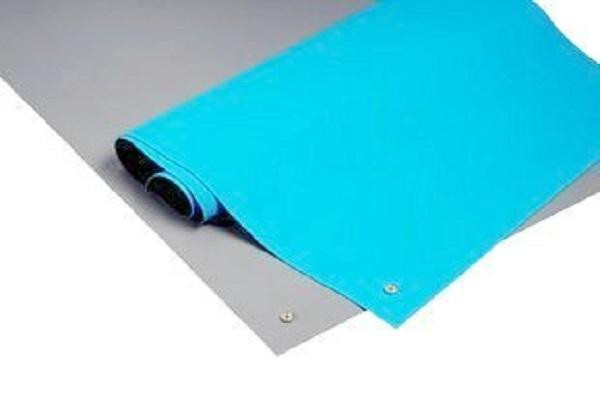ESD Mat: What it is, How it Works, and Why You Need One
If you work in the electronics industry, you're probably familiar with the term "ESD" or electrostatic discharge. ESD can damage or even destroy electronic components and devices, and it can occur anywhere, anytime. To prevent ESD damage, it is essential to use an ESD mat.
An ESD mat is a specialized mat that is designed to dissipate static electricity and prevent electrostatic discharge. In this article, we will take a closer look at ESD mats, how they work, and why you need one.
What is an ESD Mat?
An ESD mat is a mat that is designed to provide a static-safe work surface. It is typically made of a conductive material that can dissipate static electricity. ESD mats are used in a variety of settings, including electronic manufacturing, testing, and repair environments.
How does an ESD Mat Work?
An ESD mat works by providing a conductive path to ground for static electricity. It does this by using a conductive material for the mat and connecting it to a ground point. When static electricity is present on the mat, it is quickly dissipated through the conductive material and into the ground.

ESD mats also typically have a wrist strap that connects to the conductive mat, providing a path to ground for any static electricity that may be present on the worker's body.
Why Do You Need an ESD Mat?
If you work with electronic components, you need an ESD mat to prevent electrostatic discharge. ESD can cause damage or even destruction of electronic components, which can be expensive and time-consuming to replace.
Using an ESD mat is an essential part of any ESD control program. It is a simple and cost-effective way to prevent ESD damage and protect your electronic components.
What to Consider When Choosing an ESD Mat
When choosing an ESD mat, there are several factors to consider. Here are some of the most important ones:
Size
The size of the ESD mat you choose will depend on your specific needs. If you are working on small electronic components, a small mat may be sufficient. On the other hand, if you are working on larger circuit boards, you may need a larger mat with more surface area.
Material
ESD mats are typically made from materials such as rubber, vinyl, or conductive foam. The material you choose will depend on your specific needs and budget.
Resistance
The resistance of an ESD mat is an important factor to consider. A mat with low resistance will provide a better path to ground for static electricity. Make sure you choose a mat with a resistance of less than 10^8 ohms.
Durability
The durability of an ESD mat is also important. Make sure you choose a mat that is durable and easy to clean.
Price
The price of an ESD mat can vary greatly depending on its size, material, and features. Make sure you choose a mat that meets your needs and budget.
Types of ESD Mats
There are several types of ESD mats available on the market today. Here are some of the most common types:
Rubber ESD Mat
A rubber ESD mat is a popular choice for many electronics workers. It is durable, easy to clean, and provides a good path to ground for static electricity.
Vinyl ESD Mat
A vinyl ESD mat is another popular choice. It is typically less expensive than a rubber mat and still provides a good path to ground for static electricity.
Conductive ESD Mat
A conductive ESD mat is a more specialized option. It is typically more expensive than a rubber or vinyl mat.
For more info:-
Source URL:- https://sites.google.com/view/esd-mat-/home
Comments
Post a Comment